This week I share my photos and experience from a visit to the village of Evandale, and the nearby National Trust of Tasmania property Clarendon Estate.
Evandale
Evandale is a village a little way south of Launceston’s airport, about 19 km south of Launceston CBD and about 5 km south of the airport. There is probably a lot more to the place than we saw or experienced. Evandale was basically a morning tea stop on the way to Clarendon and driving further south. The main streets oozed a fair degree of history, however, and the place seemed to have a healthy identity and character.
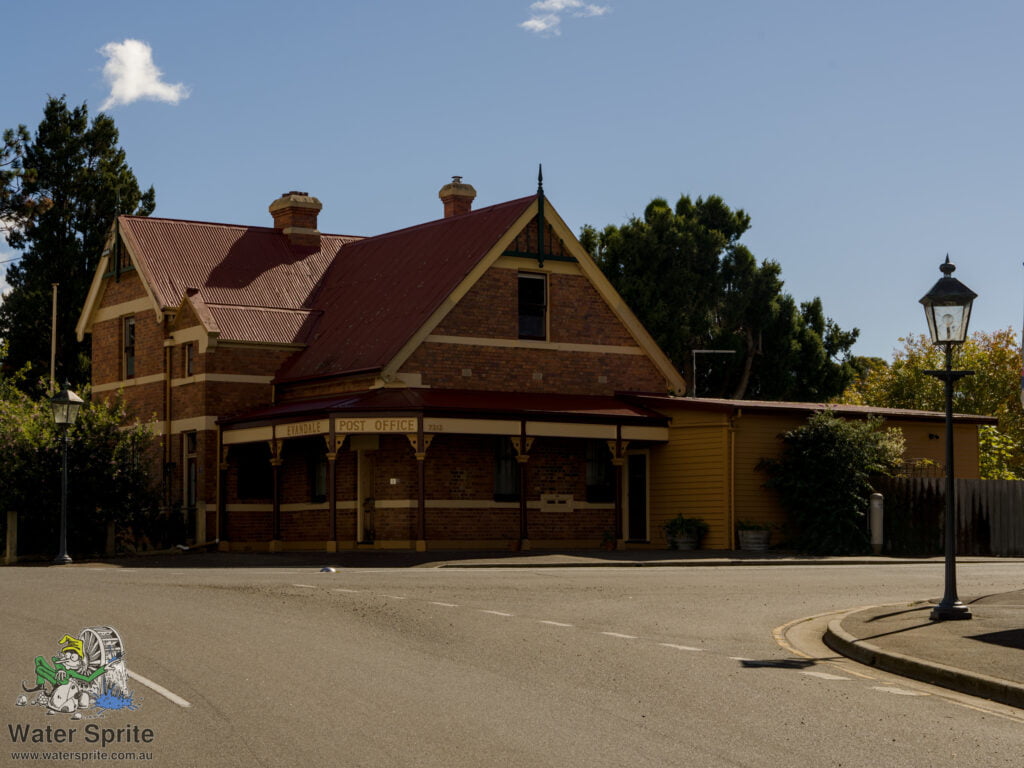
Sony A7Riv with Sony FE 24-70mm F2.8 GM II lens @ 47mm. 1/125s, f/14.0, 100 ISO.
I didn’t take a photo (oversight, I know) but the Clarendon Arms was the only place open for morning tea that morning. Quite a character-filled old town pub, which also ran a quite respectable little cafe. They have a full kitchen and did meals too, but we weren’t there for that. They did have a selection of gluten free cakes, so they do rate a special mention for that. We then wandered around the main streets.
The churches
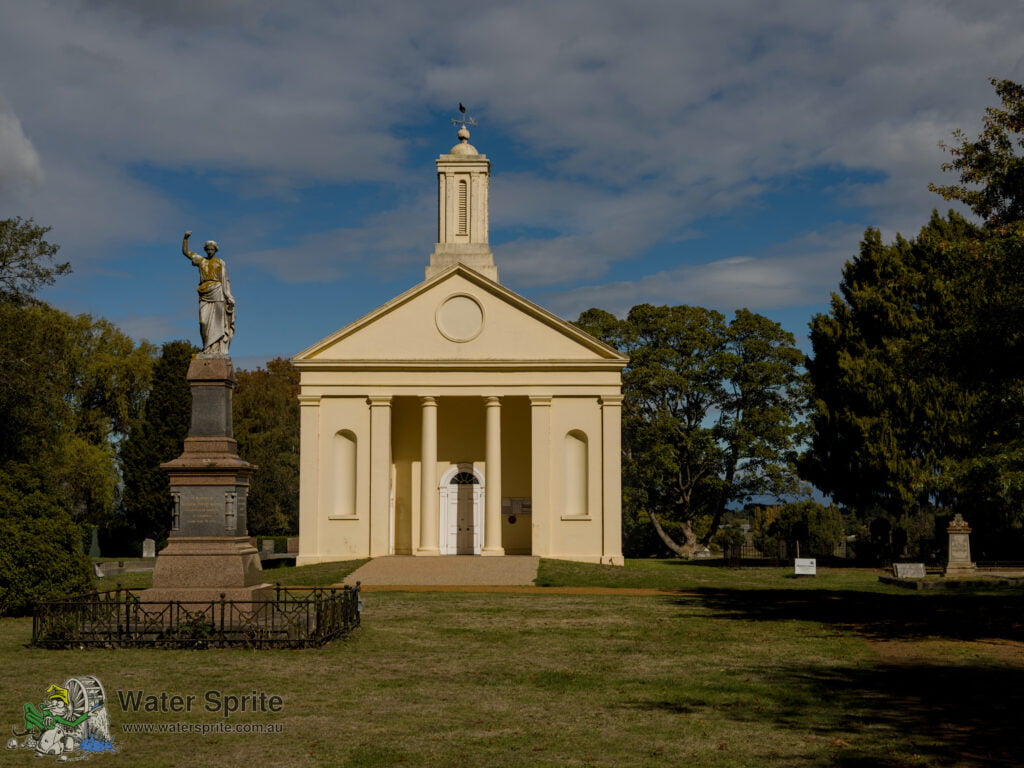
Sony A7Riv with Sony FE 24-70mm F2.8 GM II lens @ 47mm. 1/320s, f/14.0, 100 ISO.
Evandale has two churches opposite each other on the main street in from the airport. The Uniting Church (ex-Presbyterian) is a very austere and serious looking building, with greek/roman temple overtones without actually being particularly greek or roman. The statue in the front yard is a memorial to the founding Reverend, who presided here for some forty years during the nineteenth century and oversaw the building of the church building.
The cemetery beside and behind the church has grand views out over the South Esk River valley.
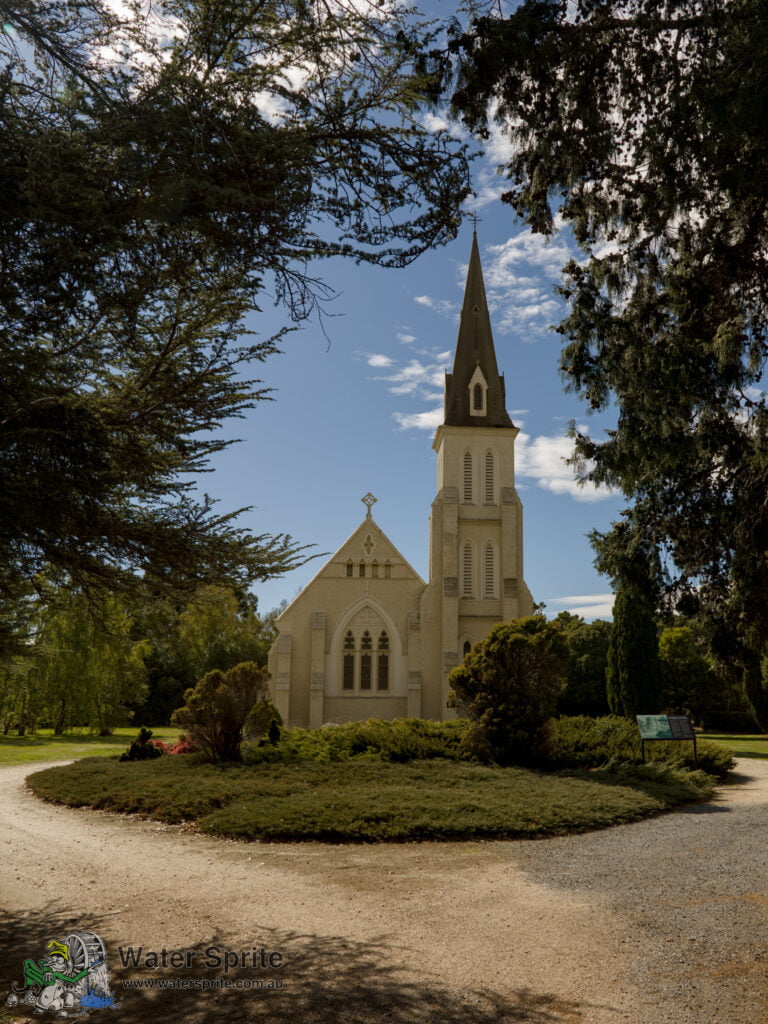
Sony A7Riv with Sony FE 24-70mm F2.8 GM II lens @ 24mm. 1/200s, f/14.0, 100 ISO.
Directly across the road from St Andrew’s Uniting Church, we find St Andrew’s Anglican Church. Signage at the site suggests that the original Anglican church was established about the same time as the Presbyterian church across the road, but was located “nearby”. A dedicated church was built, close by to where the present one stands, a few years after the establishment of the parish. The new church had to be replaced some 30 years later due to its foundations failing. The present church building was built adjacent to it before the old one was then demolished. This is a much more traditional English gothic revival church architecture.



Links
Clarendon Estate
The house
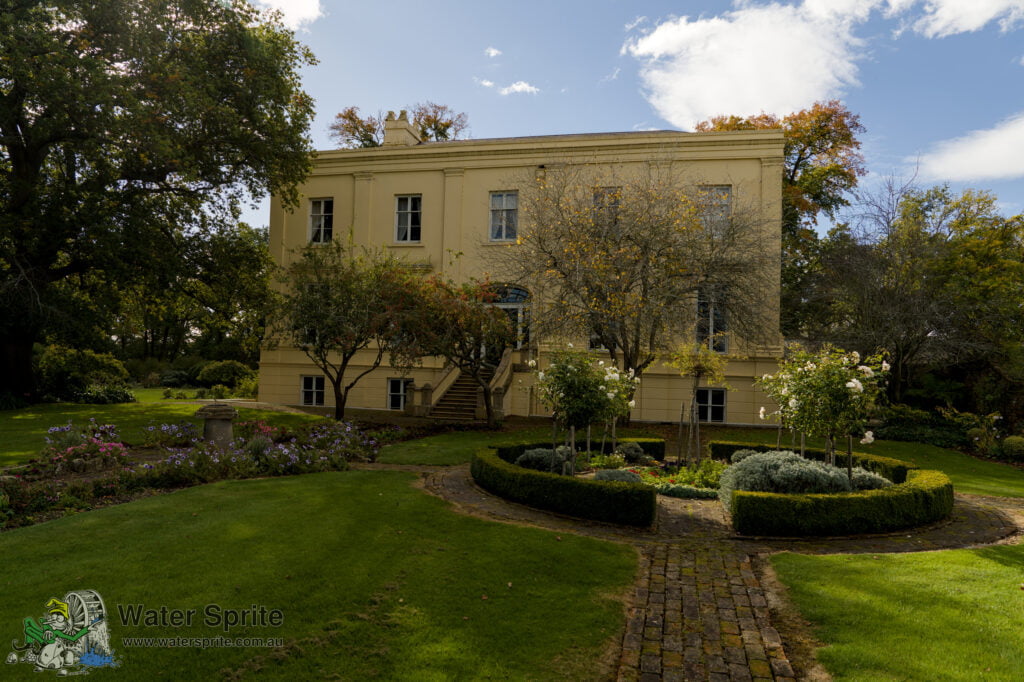
Sony A7Riv with Sony FE 24-70mm F2.8 GM II lens @ 24mm. 1/250s, f/6.3, 100 ISO.
If I understood the information provided, the Clarendon Estate property was one of the first National Trust of Tasmania properties, which was gifted to the Trust in derelict state in the 1960’s. The Trust restored the property, including rebuilding the front portico. Apparently there are essentially no footings under the walls, either, and some effort has been required to stabilise the overall structure. The Trust has also gone to great pains to furnish the property to reflect how the property might have looked in its heyday.
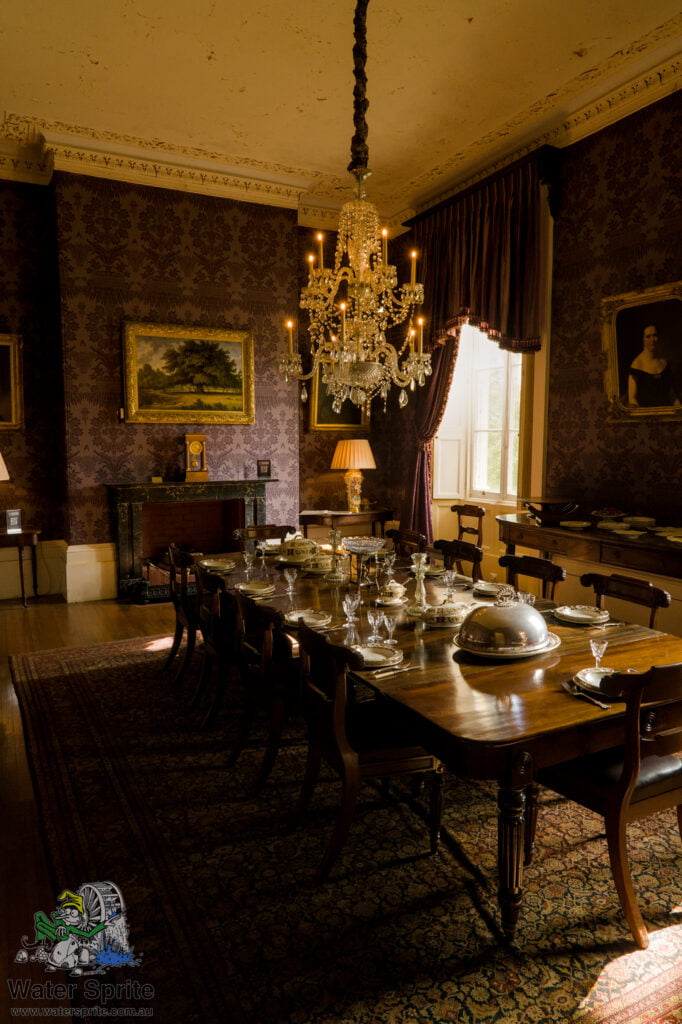
Sony A7Riv with Sony FE 24-70mm F2.8 GM II lens @ 24mm. 1/30s, f/14.0, 2500 ISO.
It isn’t possible to get access to the house without a guided tour, but after the guided tour we had free reign to wander around the house and look at things in more detail at our leisure. The tour included some information about the outbuildings and gardens, but doesn’t actually visit them. We did ask questions about the gardens and outbuilding after we completed our wander and the guide was very happy to answer them. I get the impression that you are allowed to view the gardens and outbuildings without a tour, but I encourage you to do the tour anyway, as the money goes to maintaining the house and surrounding estate. That also gives you the inside story on the house and its history. Our guide was very knowledgeable about the house and its former occupants.
History
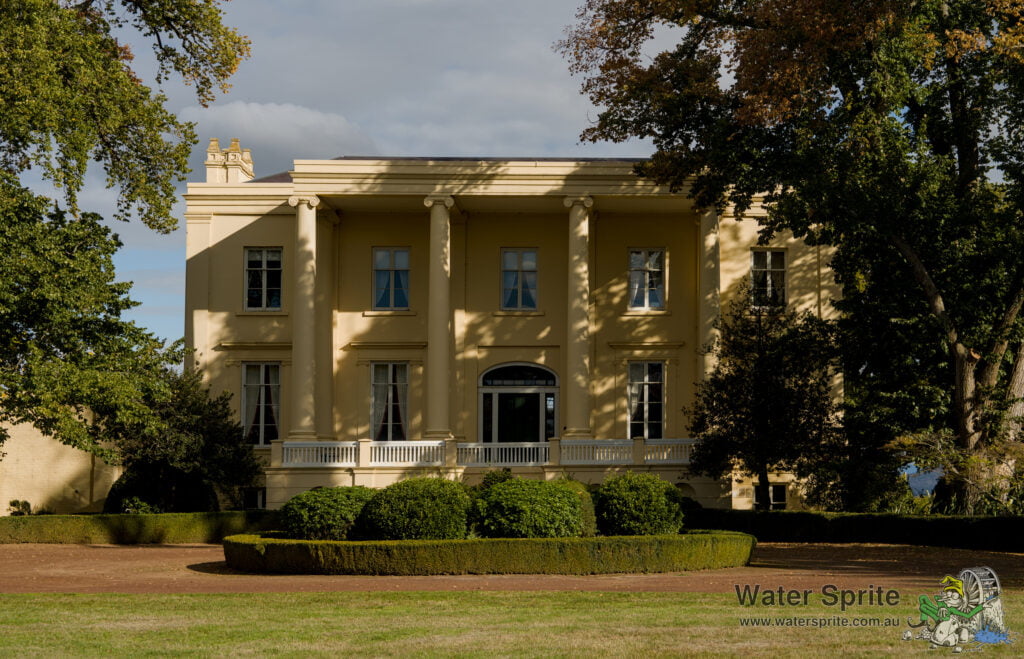
Sony A7Riv with Sony FE 24-70mm F2.8 GM II lens @ 65mm. 1/200s, f/9.0, 100 ISO.
The story goes that originally the road past Clarendon went past what is now the back of the house, between the house and its outbuildings. This is not actually that unusual in rural areas of Australia where the roads originally were tracks leading from house to house through the rural landscape. When an official road was made, it came closest to the other side of the house. Their solution was to build a grand portico around what had been the back door, and make that the front door instead!
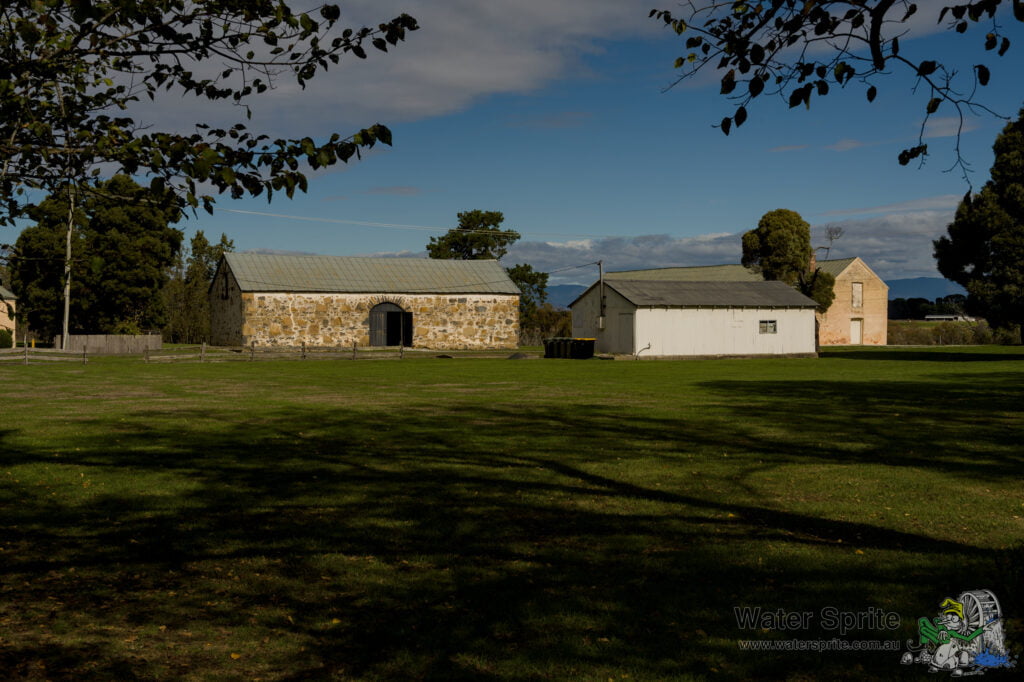
Sony A7Riv with Sony FE 24-70mm F2.8 GM II lens @ 48mm. 1/320s, f/14.0, 100 ISO.
The head of the family that established the house, if the story is to be believed, was notable for treating his servants and convicts with respect. The story goes that he provided the best accomodation for convicts in the district, but was generally not greatly in favour of convict labour. We were told that while he did have convicts for a while, he eventually reverted to using paid non-convict labourers as the quality of their workmanship and the reliability of their service was better. The convict quarters do still exist, but were not open for viewing when we were there.
The gardens
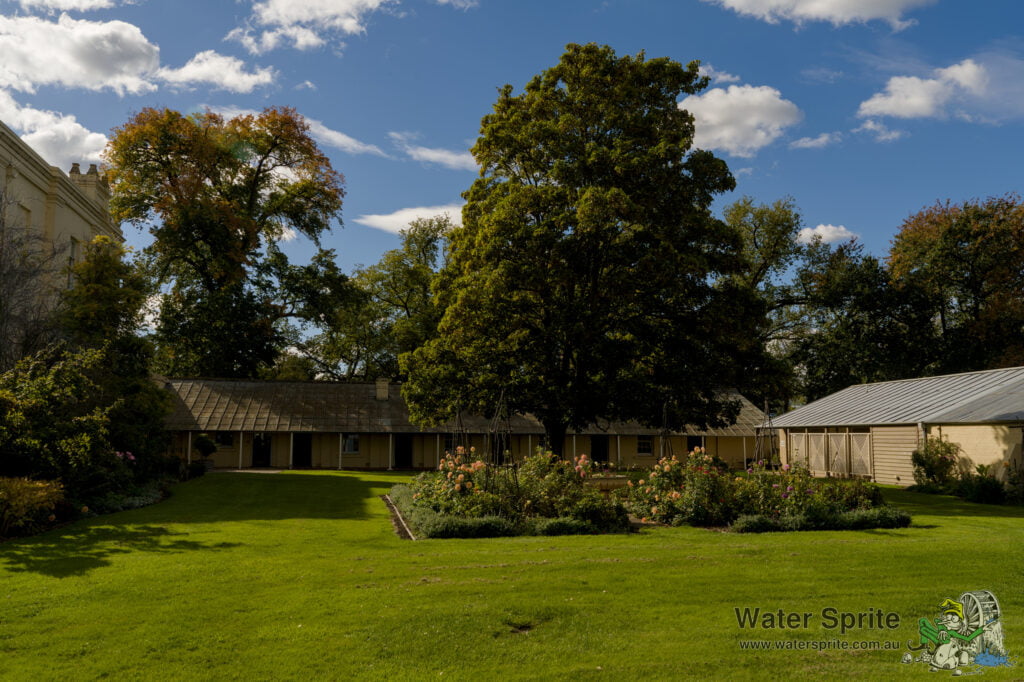
Sony A7Riv with Sony FE 24-70mm F2.8 GM II lens @ 30mm. 1/80s, f/14.0, 100 ISO.
The Trust have redone the gardens in a style they believe reflects the way they would have looked. The gardens are not as grand as the urban showpieces of places like Como in Melbourne, but nevertheless reflect a level of genteel grandeur. The space that would have been the kitchen gardens originally is now mostly a grassed area that was very pleasant for eating lunch. I presume that it would originally have been far more functional. The current garden has a wide selection of flowers that were being well frequented by both honey bees and bumblebees when we visited.
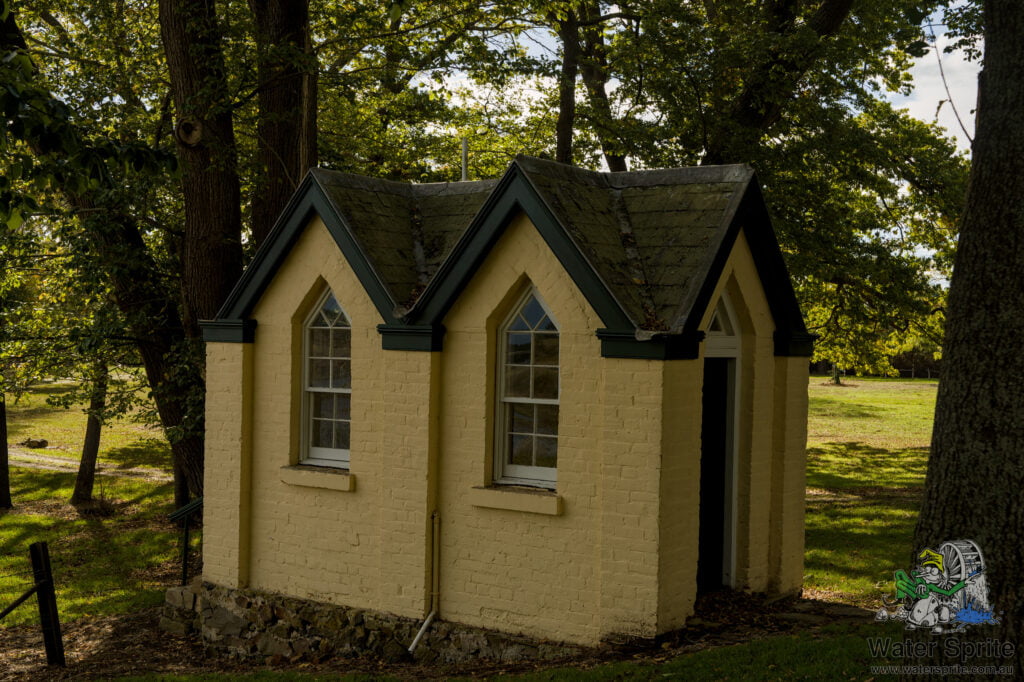
Sony A7Riv with Sony FE 24-70mm F2.8 GM II lens @ 47mm. 1/200s, f/6.3, 100 ISO.
Out to one side of the front lawns are the privies. The remains of convict-built features are located in the vicinity and may have been associated with it. We were told that the current privies building is substantially original and dates from around the same time as the house was built. It was originally a long drop privy, but was converted to two flush toilets at some more recent time.
Summary
My short description here has not done Clarendon Estate justice. There are several things here to see, and much that is not (at this point, anyway) open to the public that no doubt has interesting stories behind it too. There isn’t a cafe on site, but I guess the visitor levels probably don’t justify it and it isn’t that far from Evandale. I do hope the National Trust get enough income to continue to preserve and potentially expand what is available.








Links
Disclaimer
We attended the establishments and locations mentioned in this post as full fee-paying guests. Our hosts were not advised that we are semi-professional photographers or bloggers before or during our visit. It is our understanding that the tours and information we received were as normally provided to any member of the public.
The views expressed in this post are mine and mine alone, and any errors in it are also all mine. Any recommendations made in this post are unpaid and are based entirely on my experiences during my visit. Your experience may differ, and I cannot be responsible for that.
The National Trust encourage photography of their properties. I have not identified any limitations on commercial use of photographs taken at their properties. A proportion of sales of photographs sourced from Clarendon Estate will be donated to the National Trust Tasmania. If you are interested in purchasing photos for any purpose, please contact me.
Leave a Reply